 |
 |
 |
 |
 |
 |
 |
 |
 |
 |
 |
 |
| |
France
For information and a larger map of the country, click on the map above.
Sites
Avignon
Avignon Bridge
Palace of the Popes
Giverny
Claude Monet’s House and Gardens
Saint Radegonde Church
Les Andelys
Château Gaillard
Church of Saint-Sauveur
Marseille
Notre-Dame de lar Garde |
Abbey of St Victor |
|
Normandy |
Omaha Beach Museums and Memorials and the American Cemetery
Paris
Eiffel Tower
Arc de Triomphe
|
Notre-Dame de Paris
Dôme des Invalides - Napoleon Bonaparte's Tomb
Cathedral of Saint-Louis-des-Invalides
Memorial Garden for the Children of the Vel d'Hiv
|
Rueil-Malmaison
Château de Malmaison (Malmaison)
Rouen
Church of Saint Joan of Arc
Notre-Dame Cathedral
Church of St Maclou
Abbey Church of Saint Ouen
Toulon
Toulon Cathedral
|
|
Corsica
Ajaccio
Maison Bonaparte,
(Napoleon Bonaparte’s House)
Our Lady of the Assumption Cathedral |
| |
|
|
 |
|
 |
 |
France
Avignon
Bridge at Avignon
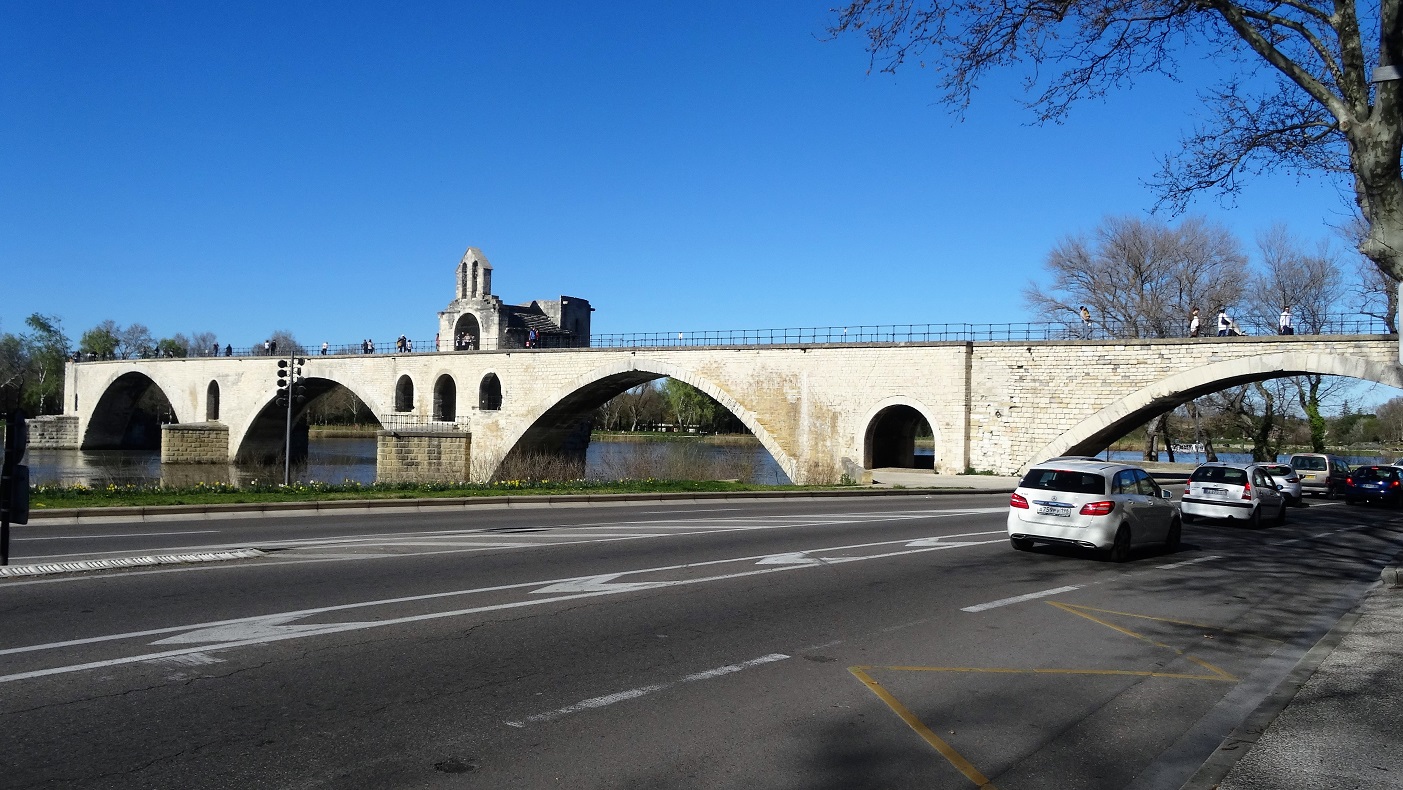 The Bridge at Avignon is known throughout the world due to the classic song "Sur le Pont d'Avignon". Built between 1177 and 1185 as a wooden bridge, it was for a long time the only bridge across the Rhône south of Lyon. Demolished after the fall of Avignon in 1226 by Louis VIII of France it was rebuilt as a stone bridge in 1234 but was completely abandoned in 1680. Today only four of the original 22 arches remain. READ MORE The Bridge at Avignon is known throughout the world due to the classic song "Sur le Pont d'Avignon". Built between 1177 and 1185 as a wooden bridge, it was for a long time the only bridge across the Rhône south of Lyon. Demolished after the fall of Avignon in 1226 by Louis VIII of France it was rebuilt as a stone bridge in 1234 but was completely abandoned in 1680. Today only four of the original 22 arches remain. READ MORE
Palace of the Popes'
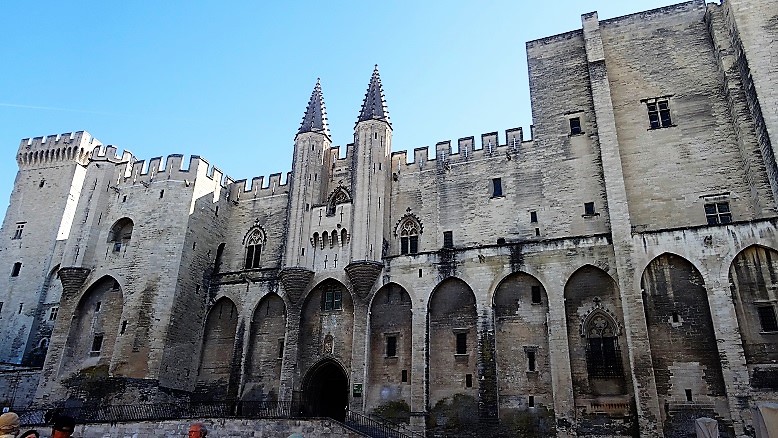 The Palace of the Popes in Avignon became the Papal residence between 1309 to 1377 when the Papal Curia moved there from Rome. Today it consists of two main buildings: The Old Palace, constructed in the Romanesque style by Benedict XII between 1334 and 1342, and the New Palace of Gothic design constructed by Clement VI between 1342 and 1352. It covers an area of 15,000 square meters and is one of Frances's most visited monuments. READ MORE The Palace of the Popes in Avignon became the Papal residence between 1309 to 1377 when the Papal Curia moved there from Rome. Today it consists of two main buildings: The Old Palace, constructed in the Romanesque style by Benedict XII between 1334 and 1342, and the New Palace of Gothic design constructed by Clement VI between 1342 and 1352. It covers an area of 15,000 square meters and is one of Frances's most visited monuments. READ MORE
Giverny
Claude Monet’s House and Gardens
 Claude Monet’s House and Gardens in Giverny, form harmonious and immersive factors where art and nature combine. The pink house with green shutters is richly decorated internally with vibrant rooms such as the yellow dining room and blue sitting room, adorned with Japanese prints and Impressionist reproductions. Outside, the Clos Normand contains a collection of seasonal flowers artistically arranged, while the Water Garden - complete with Japanese bridge and water lilies - reflects Monet’s fascination with light and reflection. Together, the house and gardens reveal Monet’s artistic vision not just on canvas, but in every detail of his living environment. READ MORE Claude Monet’s House and Gardens in Giverny, form harmonious and immersive factors where art and nature combine. The pink house with green shutters is richly decorated internally with vibrant rooms such as the yellow dining room and blue sitting room, adorned with Japanese prints and Impressionist reproductions. Outside, the Clos Normand contains a collection of seasonal flowers artistically arranged, while the Water Garden - complete with Japanese bridge and water lilies - reflects Monet’s fascination with light and reflection. Together, the house and gardens reveal Monet’s artistic vision not just on canvas, but in every detail of his living environment. READ MORE
Saint Radegonde Church
 Saint Radegonde Church is a small, 11th-century Romanesque parish church that blends architectural simplicity with historical resonance. It has simple stone walls, a vaulted wooden nave, semi-circular stone apse, and modest Baroque altar with a colourful altar painting of Jesus. Inside are statues, some of which are damaged, that tell stories from history. It also contains an old wooden cart once used for carrying coffins. Outside, the graveyard holds the grave of artist Claude Monet, and his family, seven British airmen from World War II, as well as local people. READ MORE Saint Radegonde Church is a small, 11th-century Romanesque parish church that blends architectural simplicity with historical resonance. It has simple stone walls, a vaulted wooden nave, semi-circular stone apse, and modest Baroque altar with a colourful altar painting of Jesus. Inside are statues, some of which are damaged, that tell stories from history. It also contains an old wooden cart once used for carrying coffins. Outside, the graveyard holds the grave of artist Claude Monet, and his family, seven British airmen from World War II, as well as local people. READ MORE
Les Andelys
Château Gaillard
 Château Gaillard is a 12th-century fortress built by Richard the Lionheart above the Seine River in Les Andelys, Normandy. Constructed in just two years (1196–1198), it was a marvel of medieval military architecture, featuring concentric defences, dry moats, and early use of machicolations. Though it fell to the French in 1204 after a prolonged siege, its ruins still stand as a bold testament to Richard’s ambition and ingenuity. READ MORE Château Gaillard is a 12th-century fortress built by Richard the Lionheart above the Seine River in Les Andelys, Normandy. Constructed in just two years (1196–1198), it was a marvel of medieval military architecture, featuring concentric defences, dry moats, and early use of machicolations. Though it fell to the French in 1204 after a prolonged siege, its ruins still stand as a bold testament to Richard’s ambition and ingenuity. READ MORE
Church of Saint-Sauveur
 Church of Saint-Sauveur in Petit-Andely is a 13th-century Gothic church built as a chapel for workers constructing Château Gaillard under Richard the Lionheart. Featuring a rare Greek cross layout, a 47-meter spire, and a richly sculpted portal with a polychrome statue of Christ Blessing, it blends medieval architecture with Baroque and Renaissance artistry. Inside, it houses stained glass windows from the 14th to 20th centuries, a Louis XIV altar-retable with paintings by Philippe de Champaigne, and a historic 1674 organ with nearly all original pipes. READ MORE Church of Saint-Sauveur in Petit-Andely is a 13th-century Gothic church built as a chapel for workers constructing Château Gaillard under Richard the Lionheart. Featuring a rare Greek cross layout, a 47-meter spire, and a richly sculpted portal with a polychrome statue of Christ Blessing, it blends medieval architecture with Baroque and Renaissance artistry. Inside, it houses stained glass windows from the 14th to 20th centuries, a Louis XIV altar-retable with paintings by Philippe de Champaigne, and a historic 1674 organ with nearly all original pipes. READ MORE
Marseille
Notre-Dame de la Garde
.JPG?212) The Catholic Basilica built in 1852 on the foundations of a 16th-century fort situated on a hill overlooking Marseille. With its crypt hewn out of the rock the basilica with its 11.2 meter high statue of the Madonna and Child made of copper and gilded with gold leaf on the top of its Bell Tower, is the most-visited site in Marseille. READ MORE
The Catholic Basilica built in 1852 on the foundations of a 16th-century fort situated on a hill overlooking Marseille. With its crypt hewn out of the rock the basilica with its 11.2 meter high statue of the Madonna and Child made of copper and gilded with gold leaf on the top of its Bell Tower, is the most-visited site in Marseille. READ MORE
Abbey of Saint Victor
.JPG?151) The Abbey of Saint Victor, Marseille was built in the 11th and 14th centuries and stands over an earlier crypt that houses early Christian sarcophagi. Between 11th and 18th centuries the abbey played an important role in Christianity’s development in the Mediterranean. READ MORE
The Abbey of Saint Victor, Marseille was built in the 11th and 14th centuries and stands over an earlier crypt that houses early Christian sarcophagi. Between 11th and 18th centuries the abbey played an important role in Christianity’s development in the Mediterranean. READ MORE
Normandy
Omaha Beach Museums and Memorials and the American Cemetery
 Overlooking Omaha Beach is the Normandy American Cemetery which spans 172.5 acres and contains 9,388 graves, the Walls of the Missing, a memorial colonnade, and the powerful bronze statue called “Spirit of American Youth Rising from the Waves”. It also holds a visitor centre that provides an understanding of Operation Overlord. Omaha Beach is home to several museums and memorials that commemorate the D-Day landings and the American soldiers who fought there. The Museum D-Day Omaha in Vierville-sur-Mer and the Omaha Beach Memorial Museum in Saint-Laurent-sur-Mer, offer exhibits on the landings, and feature uniforms, equipment, and personal stories. On the beach itself, the striking “Les Braves” sculpture honours courage and freedom, complemented by a nearby stone monument with bilingual inscriptions paying tribute to the fallen. READ MORE Overlooking Omaha Beach is the Normandy American Cemetery which spans 172.5 acres and contains 9,388 graves, the Walls of the Missing, a memorial colonnade, and the powerful bronze statue called “Spirit of American Youth Rising from the Waves”. It also holds a visitor centre that provides an understanding of Operation Overlord. Omaha Beach is home to several museums and memorials that commemorate the D-Day landings and the American soldiers who fought there. The Museum D-Day Omaha in Vierville-sur-Mer and the Omaha Beach Memorial Museum in Saint-Laurent-sur-Mer, offer exhibits on the landings, and feature uniforms, equipment, and personal stories. On the beach itself, the striking “Les Braves” sculpture honours courage and freedom, complemented by a nearby stone monument with bilingual inscriptions paying tribute to the fallen. READ MORE
Paris
Eiffel Tower

The Eiffel Tower is an iconic symbol of Paris, France, that was designed by Gustave Eiffel and built between 1887 and 1889 for the 1889 World's Fair. Made of puddle iron with 18,038 metal components held together with 2.5 million rivets. It stands 330 meters (1,083 feet) tall and has three floors with restaurants, exhibits, and a champagne bar at the summit. It receives over 5.8 million visitors annually, making it one of the world’s most popular landmarks. READ MORE
Arc de Triomphe
 The Arc de Triomphe is an iconic monument in Paris, commissioned by Napoleon I in 1806 to honour the victories of the French army. Completed in 1836, it stands 50 meters (164 feet) high and features intricate sculptures and engravings celebrating key moments in French history. Beneath its vault lies the Tomb of the Unknown Soldier, with an eternal flame that burns in remembrance of fallen soldiers. READ MORE The Arc de Triomphe is an iconic monument in Paris, commissioned by Napoleon I in 1806 to honour the victories of the French army. Completed in 1836, it stands 50 meters (164 feet) high and features intricate sculptures and engravings celebrating key moments in French history. Beneath its vault lies the Tomb of the Unknown Soldier, with an eternal flame that burns in remembrance of fallen soldiers. READ MORE
Notre-Dame de Paris
 Built between 1163 and 1345 on Île de la Cité in Paris. Notre-Dame de Paris is dedicated to the Virgin Mary and is one of the most iconic cathedrals in the world. A masterpiece of French Gothic architecture, it features flying buttresses, ribbed vaults, and rose windows. It is also known for its three intricately sculpted entrances depicting biblical scenes and its twin Towers which rise 69 meters (226 feet) and dominate the western façade. The cathedral suffered severe damage in the 2019 fire, prompting an extensive restoration effort which was mainly completed in 2024. READ MORE Built between 1163 and 1345 on Île de la Cité in Paris. Notre-Dame de Paris is dedicated to the Virgin Mary and is one of the most iconic cathedrals in the world. A masterpiece of French Gothic architecture, it features flying buttresses, ribbed vaults, and rose windows. It is also known for its three intricately sculpted entrances depicting biblical scenes and its twin Towers which rise 69 meters (226 feet) and dominate the western façade. The cathedral suffered severe damage in the 2019 fire, prompting an extensive restoration effort which was mainly completed in 2024. READ MORE
Dôme des Invalides - Napoleon Bonaparte's Tomb
 The Dôme des Invalides is a monumental Baroque structure in Paris, originally commissioned by Louis XIV as part of the Hôtel des Invalides, a complex for wounded soldiers. Designed by Jules Hardouin-Mansart and completed in 1706, the dome is crowned in gold and stands as one of the tallest church buildings in Paris. Over time, it evolved from a royal chapel into a national military shrine, most famously housing the tomb of Napoleon Bonaparte. Its design blends classical symmetry, Renaissance inspiration, and Baroque grandeur, making it both a religious space and a powerful symbol of French military history. READ MORE The Dôme des Invalides is a monumental Baroque structure in Paris, originally commissioned by Louis XIV as part of the Hôtel des Invalides, a complex for wounded soldiers. Designed by Jules Hardouin-Mansart and completed in 1706, the dome is crowned in gold and stands as one of the tallest church buildings in Paris. Over time, it evolved from a royal chapel into a national military shrine, most famously housing the tomb of Napoleon Bonaparte. Its design blends classical symmetry, Renaissance inspiration, and Baroque grandeur, making it both a religious space and a powerful symbol of French military history. READ MORE
Cathedral of Saint-Louis-des-Invalides
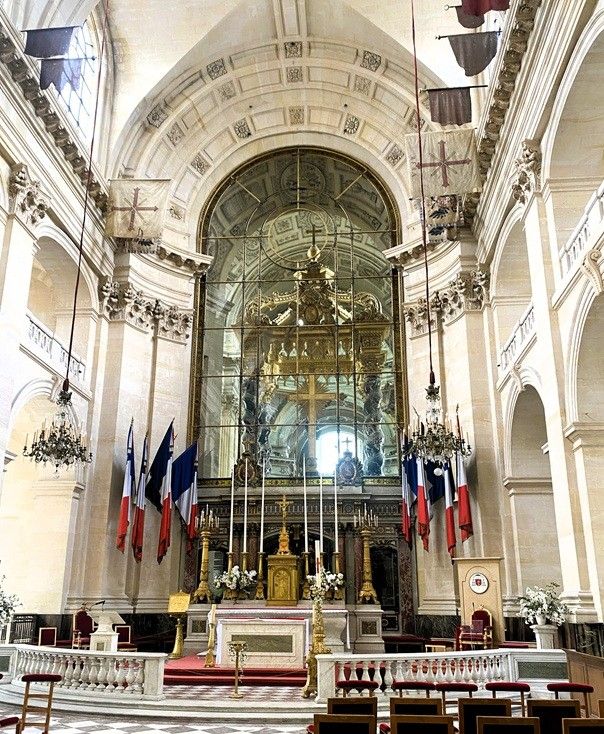 The Cathedral of Saint-Louis-des-Invalides, designed by Jules Hardouin-Mansart and completed in 1679 under Louis XIV, is a masterpiece of French Classical architecture that serves as both a place of worship and a national military memorial. Originally built as a chapel for war veterans housed at Les Invalides, it was, in 1986, designated the cathedral of the French Armed Forces. Its interior contains a nave adorned with captured enemy flags and overlooked by Napoleon’s tomb in the adjoining royal chapel. The cathedral contains an organ with a richly carved 17th-century case, which is one of the oldest and most historically rich instruments in Paris. The cathedral’s dual entrances, symbolic layout, and commemorative elements - such as the Liberty Way Marker - embody a profound dialogue between faith, service, and remembrance. READ MORE The Cathedral of Saint-Louis-des-Invalides, designed by Jules Hardouin-Mansart and completed in 1679 under Louis XIV, is a masterpiece of French Classical architecture that serves as both a place of worship and a national military memorial. Originally built as a chapel for war veterans housed at Les Invalides, it was, in 1986, designated the cathedral of the French Armed Forces. Its interior contains a nave adorned with captured enemy flags and overlooked by Napoleon’s tomb in the adjoining royal chapel. The cathedral contains an organ with a richly carved 17th-century case, which is one of the oldest and most historically rich instruments in Paris. The cathedral’s dual entrances, symbolic layout, and commemorative elements - such as the Liberty Way Marker - embody a profound dialogue between faith, service, and remembrance. READ MORE
Memorial Garden for the Children of the Vel d'Hiv
 The Memorial Garden for the Children of the Vel d’Hiv is a quiet, contemplative space in Paris dedicated to the memory of the Jewish children deported during the Holocaust following the 1942 Vel d’Hiv Roundup. Located near the Eiffel Tower, the garden features symbolic elements such as engraved plaques bearing the children’s names, a poignant sculpture, photographs of some of the children, and a serene layout designed for reflection. It serves not only as a tribute to innocent lives lost but also as a powerful reminder of France’s role in the deportations, inviting visitors to confront the past with empathy and remembrance. READ MORE The Memorial Garden for the Children of the Vel d’Hiv is a quiet, contemplative space in Paris dedicated to the memory of the Jewish children deported during the Holocaust following the 1942 Vel d’Hiv Roundup. Located near the Eiffel Tower, the garden features symbolic elements such as engraved plaques bearing the children’s names, a poignant sculpture, photographs of some of the children, and a serene layout designed for reflection. It serves not only as a tribute to innocent lives lost but also as a powerful reminder of France’s role in the deportations, inviting visitors to confront the past with empathy and remembrance. READ MORE
Rueil-Malmaison
Château de Malmaison (Malmaison)
 The Château de Malmaison, once the private residence of Empress Joséphine, blends Consulate-era elegance and neoclassical design, and incorporates Roman-inspired architecture with intimate personal touches. Transformed by architects Percier and Fontaine, Malmaison served as both a political centre during Napoleon’s Consulate and a romantic retreat that reflected Joséphine’s love of art, botany, and style. Each room - from the tented Council Chamber to the swan-adorned boudoir - tells a story of power, taste, and sentiment, while its lush gardens and pavilions offer a tranquil backdrop to one of France’s most iconic historical homes. READ MORE The Château de Malmaison, once the private residence of Empress Joséphine, blends Consulate-era elegance and neoclassical design, and incorporates Roman-inspired architecture with intimate personal touches. Transformed by architects Percier and Fontaine, Malmaison served as both a political centre during Napoleon’s Consulate and a romantic retreat that reflected Joséphine’s love of art, botany, and style. Each room - from the tented Council Chamber to the swan-adorned boudoir - tells a story of power, taste, and sentiment, while its lush gardens and pavilions offer a tranquil backdrop to one of France’s most iconic historical homes. READ MORE
Rouen
Church of Saint Joan of Arc
The Church of Saint Jo an of Arc in Rouen is a modern Catholic church, completed in 1979, which is in Place du Vieux-Marché, the site of Joan of Arc’s execution in 1431. Designed by Louis Arretche, its sweeping curves evoke flames and an overturned longship, symbolizing Joan’s martyrdom and Christian heritage. The church incorporates stained glass windows salvaged from the 16th-century Church of Saint Vincent, before its destruction in World War II. READ MORE an of Arc in Rouen is a modern Catholic church, completed in 1979, which is in Place du Vieux-Marché, the site of Joan of Arc’s execution in 1431. Designed by Louis Arretche, its sweeping curves evoke flames and an overturned longship, symbolizing Joan’s martyrdom and Christian heritage. The church incorporates stained glass windows salvaged from the 16th-century Church of Saint Vincent, before its destruction in World War II. READ MORE
Notre-Dame Cathedral
 Notre-Dame Cathedral of Rouen has been a centre of faith, art, and history for over 800 years. An original church on the site dated to the 4th century; with a major Gothic reconstruction beginning in 1145. Severely damaged by fire in 1200, it underwent a major Gothic rebuild, including the nave and choir. It again suffered damage requiring extensive restorations during the Wars of Religion and during WWII. From 1876 to 1880, due to its 151-meter cast-iron spire, it was the Tallest Building in the World, until it was surpassed by the Cologne Cathedral. Its Interior includes a majestic choir, high altar, more than 15 side chapels, and a stone ambulatory lined with statues and tombs, including the tomb containing the heart of King Richard the Lionheart. It is also famous for its Booksellers’ Staircase, a 15th-century spiral staircase of carved stone, linking the cathedral to its historic library. READ MORE Notre-Dame Cathedral of Rouen has been a centre of faith, art, and history for over 800 years. An original church on the site dated to the 4th century; with a major Gothic reconstruction beginning in 1145. Severely damaged by fire in 1200, it underwent a major Gothic rebuild, including the nave and choir. It again suffered damage requiring extensive restorations during the Wars of Religion and during WWII. From 1876 to 1880, due to its 151-meter cast-iron spire, it was the Tallest Building in the World, until it was surpassed by the Cologne Cathedral. Its Interior includes a majestic choir, high altar, more than 15 side chapels, and a stone ambulatory lined with statues and tombs, including the tomb containing the heart of King Richard the Lionheart. It is also famous for its Booksellers’ Staircase, a 15th-century spiral staircase of carved stone, linking the cathedral to its historic library. READ MORE
Church of St Maclou
 The Church of Saint-Maclou in Rouen is a masterpiece of Flamboyant Gothic architecture, built in the 15th century and renowned for its ornate façade, intricate stone tracery, and harmonious proportions. Dedicated to Saint Maclou (or Malo), it features a striking octagonal choir with radiating chapels, a richly carved 16th-century organ case, and a spiral staircase by Jean Goujon. Though damaged during the Wars of Religion and World War II, the church retains its historic baptismal font, elegant stained glass, and expressive woodwork, blending Gothic grandeur with Renaissance detail in one of Normandy’s most artistically significant parish churches. READ MORE The Church of Saint-Maclou in Rouen is a masterpiece of Flamboyant Gothic architecture, built in the 15th century and renowned for its ornate façade, intricate stone tracery, and harmonious proportions. Dedicated to Saint Maclou (or Malo), it features a striking octagonal choir with radiating chapels, a richly carved 16th-century organ case, and a spiral staircase by Jean Goujon. Though damaged during the Wars of Religion and World War II, the church retains its historic baptismal font, elegant stained glass, and expressive woodwork, blending Gothic grandeur with Renaissance detail in one of Normandy’s most artistically significant parish churches. READ MORE
Abbey Church of Saint Ouen
 The Abbey Church of Saint Ouen in Rouen is a masterpiece of High and Flamboyant Gothic architecture, renowned for its soaring nave, luminous stained glass, and monumental Cavaillé-Coll organ. Originally founded in the 7th century and rededicated to Saint Ouen in 1126, the construction of the current structure was begun in 1318 and completed in the 16th century. Its elegant chevet with 11 radiating chapels, richly sculpted Marmousets Portal, and vast dimensions rival Rouen Cathedral in grandeur. Though the abbey was suppressed during the French Revolution and repurposed as the city’s Town Hall, the church remains a cultural landmark, hosting concerts and exhibitions within its awe-inspiring interior. READ MORE The Abbey Church of Saint Ouen in Rouen is a masterpiece of High and Flamboyant Gothic architecture, renowned for its soaring nave, luminous stained glass, and monumental Cavaillé-Coll organ. Originally founded in the 7th century and rededicated to Saint Ouen in 1126, the construction of the current structure was begun in 1318 and completed in the 16th century. Its elegant chevet with 11 radiating chapels, richly sculpted Marmousets Portal, and vast dimensions rival Rouen Cathedral in grandeur. Though the abbey was suppressed during the French Revolution and repurposed as the city’s Town Hall, the church remains a cultural landmark, hosting concerts and exhibitions within its awe-inspiring interior. READ MORE
Toulon
Toulon Cathedral
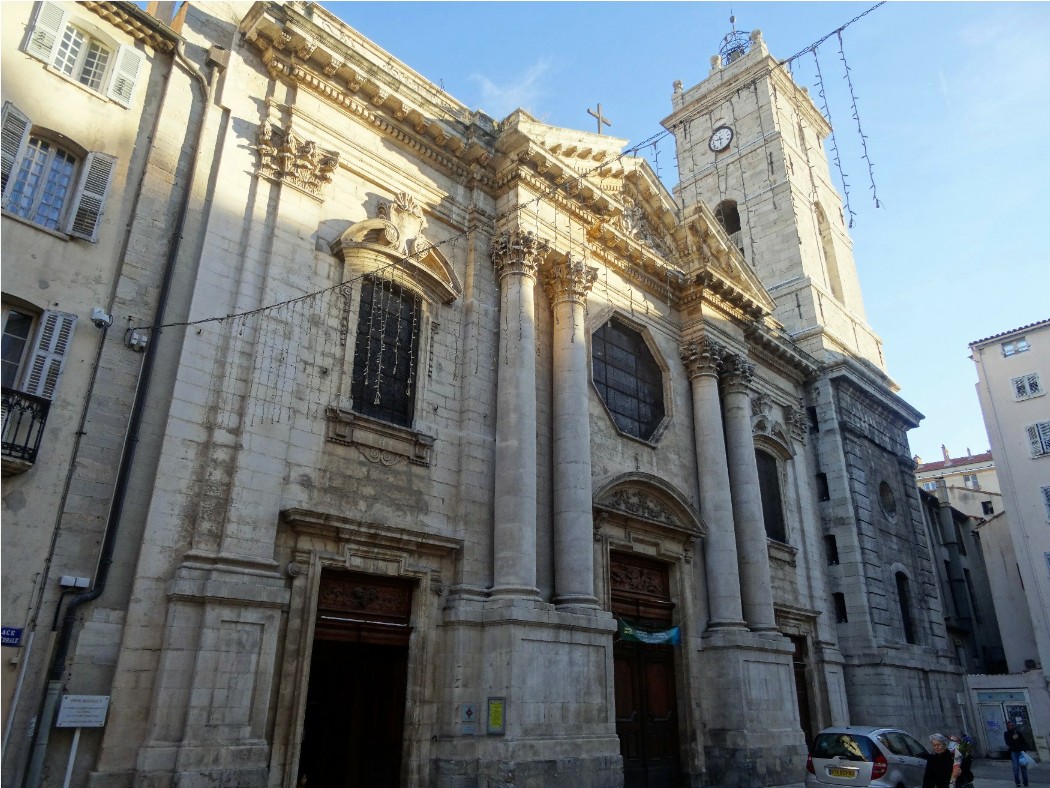 Located in the centre of the old town near the waterfront of Toulon, construction on the Cathedral, known as the Cathedral Notre-Dame-de-la-Seds, started in 1096 on the orders of Gilbert de Boson, Count of Provence to offer thanks to the Virgin for his safe return from the Crusades. Built on the site of a former church which was on the site since the 5th century, the cathedral took 700 years to build and consists of a mixture of styles including Romanesque, Gothic and Classical. READ MORE Located in the centre of the old town near the waterfront of Toulon, construction on the Cathedral, known as the Cathedral Notre-Dame-de-la-Seds, started in 1096 on the orders of Gilbert de Boson, Count of Provence to offer thanks to the Virgin for his safe return from the Crusades. Built on the site of a former church which was on the site since the 5th century, the cathedral took 700 years to build and consists of a mixture of styles including Romanesque, Gothic and Classical. READ MORE
Corsica
Ajaccio
Maison Bonaparte
(Napoleon Bonaparte’s House)
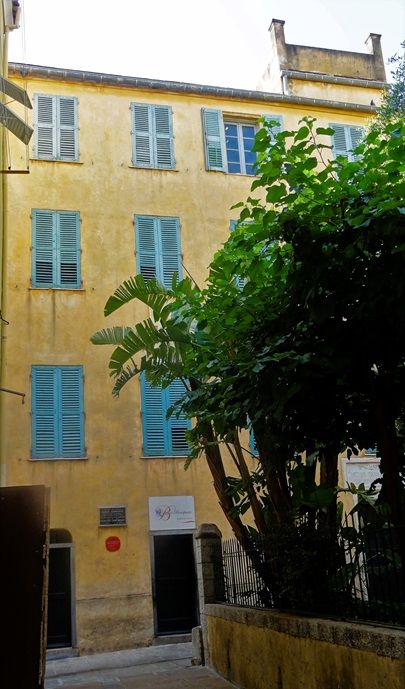
Maison Bonaparte is the house where Napoleon Bonaparte was born and was in the Bonaparte family from 1682 until 1923. In 1967 it became a national museum displaying not only the rooms and furnishings but also artifacts relating to the Bonaparte family. READ MORE
Our Lady of the Assumption Cathedral
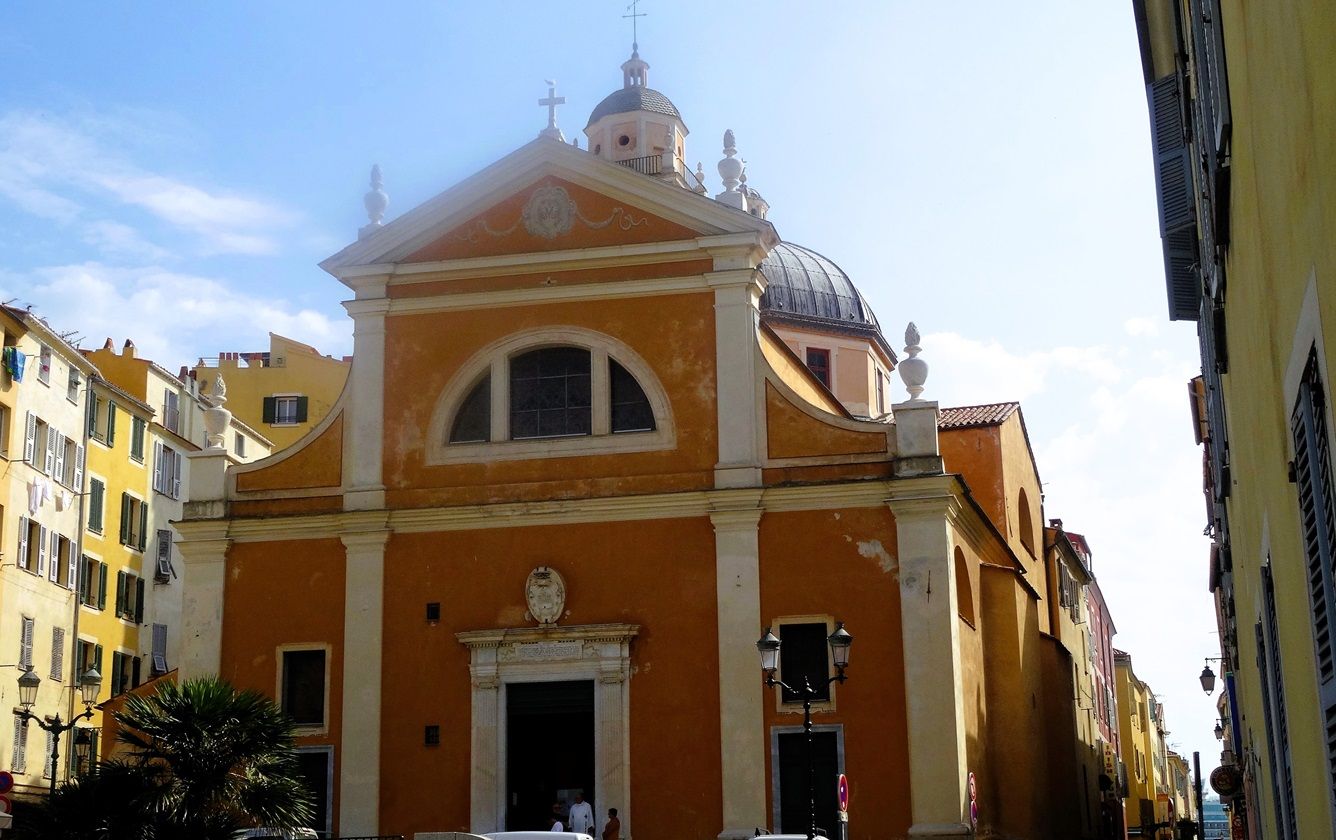 Our Lady of the Assumption Cathedral was built between 1577 and 1593 and is an example of Counter-Reformation architecture. Known for its connection to the Bonaparte family, it contains the marble Baptismal font in which Napoleon was baptised on 21 July 1771, and the altar given by Napoleon’s sister Elisa in 1809. READ MORE Our Lady of the Assumption Cathedral was built between 1577 and 1593 and is an example of Counter-Reformation architecture. Known for its connection to the Bonaparte family, it contains the marble Baptismal font in which Napoleon was baptised on 21 July 1771, and the altar given by Napoleon’s sister Elisa in 1809. READ MORE
|
 |
| |
 |
|




 Our Lady of the Assumption Cathedral was built between 1577 and 1593 and is an example of Counter-Reformation architecture. Known for its connection to the Bonaparte family, it contains the marble Baptismal font in which Napoleon was baptised on 21 July 1771, and the altar given by Napoleon’s sister Elisa in 1809. READ MORE
Our Lady of the Assumption Cathedral was built between 1577 and 1593 and is an example of Counter-Reformation architecture. Known for its connection to the Bonaparte family, it contains the marble Baptismal font in which Napoleon was baptised on 21 July 1771, and the altar given by Napoleon’s sister Elisa in 1809. READ MORE